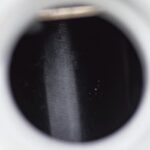Using a Dongle Emulator to connect your transmitter to the Phoenix RC flight simulator can be a frustrating experience. Many users encounter issues getting their transmitter recognized by the software. This article discusses common problems and offers potential solutions for using a dongle emulator with Phoenix RC.
Common Dongle Emulator Issues with Phoenix RC
One common issue arises from compatibility problems. Not all dongles are created equal, and some, like the newer “KS1000” 22-in-1 cable, may require specific drivers to function correctly. Even with the correct drivers, automatic recognition isn’t always guaranteed. Older dongles with a physical slider switch to select the simulator mode (like the 8-in-1) are often more reliable but can still present challenges.
Another potential hurdle is the transmitter’s trainer port. Phoenix RC relies on a compatible trainer port for the wired connection to work. If your transmitter lacks this port, a wired dongle emulator won’t work, and you might need to explore wireless solutions.
Furthermore, incorrect simulator settings within Phoenix RC can prevent the dongle from being recognized. Even with the dongle properly connected and drivers installed, ensuring the software is set to the correct mode (e.g., “Student cable mode”) is crucial.
Troubleshooting Steps
If your dongle emulator isn’t working with Phoenix RC, try these troubleshooting steps:
-
Verify Dongle Compatibility: Consult the Phoenix RC website or forums for a list of known compatible dongles. This will help you determine if your chosen dongle is supported. Resources like the RCGroups forum thread on “Phoenix RC Dongles That Work” can offer valuable insights. (https://www.rcgroups.com/forums/showthread.php?4043047-Phoenix-RC-Dongles-That-Work)
-
Driver Installation: Ensure you have the correct drivers installed for your specific dongle. If using a less common dongle, you may need to search online for compatible drivers. However, exercise caution when downloading drivers from unofficial sources to avoid potential malware.
-
Transmitter Setup: Confirm your transmitter is set to the appropriate simulator or “Student” mode. Consult your transmitter’s manual for instructions on how to activate this mode. Also, check that the trainer port (if present) is clean and free of obstructions.
-
Phoenix RC Configuration: Within Phoenix RC, double-check that you’ve selected the correct connection method in the settings. This should correspond to the type of dongle you’re using (e.g., “PPM,” “InterLink”).
-
System Restart: After installing drivers or making configuration changes, restart your computer to ensure all settings are properly applied.
Conclusion
Setting up a dongle emulator for Phoenix RC can be tricky. By understanding common issues and following the troubleshooting steps outlined above, you can increase your chances of success. If problems persist, consulting online forums dedicated to RC simulators can provide further assistance. Remember to always verify the source of driver downloads to maintain the security of your system.
